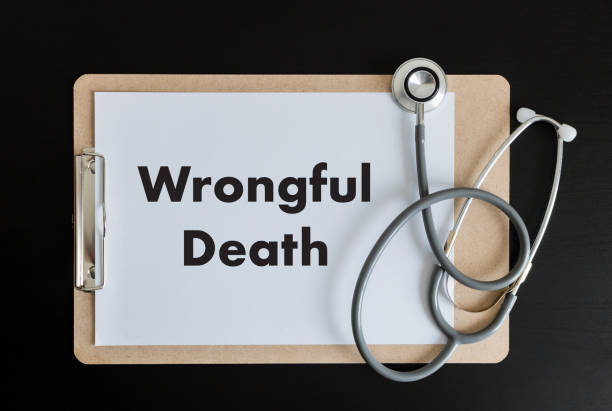Key Takeaways
- Families impacted by medical negligence can seek accountability and compensation through formal claims.
- The legal process is nuanced, so understanding each step, from documentation to negotiations, makes a difference.
- Timely action, comprehensive evidence, and clear expectations are vital to a successful claim.
- Utilizing reliable public data and staying updated on trends strengthens a family’s position during the process.
- Support from professionals and experts is crucial—don’t face these challenges alone.
What Qualifies as Medical Malpractice or Wrongful Death?
Whenever a medical intervention goes wrong, families often struggle to determine whether the outcome could have been avoided. Medical malpractice occurs not when there’s an unfavorable result. Still, when a healthcare provider strays from the care standards expected of professionals in their field, this deviation directly causes harm. These standards are based on what a reasonably prudent doctor, nurse, or healthcare worker would do under similar conditions. A wrongful death claim Tampa, FL extends this concept to situations resulting in death, holding the provider or facility accountable for fatal mistakes or oversight.
Common grounds for such claims include errors during surgery—such as leaving foreign objects in the body—improper administration of anesthesia, misdiagnosis or failure to diagnose, incorrect medications, or neglecting symptoms that require swift intervention. These claims are not about punishing unforeseeable complications, but about making things right where clear and preventable errors have changed lives. For many families, understanding this boundary helps guide their decisions about whether to take legal action.
Recognizing the Signs of Medical Negligence
After an adverse event, it’s easy to feel overwhelmed and uncertain about what happened. Some signs indicating potential negligence include treatment plans that seem to shift without explanation, repeated errors in medication or dosage, or a sudden reluctance from staff to provide clear information. Documentation discrepancies—such as missing entries, altered notes, or conflicting accounts—are also troubling indicators. If your instincts suggest something is wrong, don’t hesitate to seek clarification or a second opinion.
Families who have been through similar situations often share that keeping a daily journal detailing the patient’s care, symptoms, and interactions with staff was pivotal when reviewing events later on. This level of diligence allows issues to surface more clearly. It can be instrumental in advocating for your loved one’s well-being or in holding accountable those responsible after a loss. As discussed in Medical News Today, accurate documentation and a detailed medical record can play a crucial role in identifying medical errors and understanding whether a mistake has occurred, especially when signs of negligence are subtle or obscured.
Initial Steps: Protecting Your Rights
- Preserve Evidence: Keep copies of every piece of documentation from medical care—this includes hospital records, prescription lists, discharge instructions, and insurance communications. If you suspect negligence, request records promptly, as delays can lead to the unintentional loss or alteration of evidence. According to Britannica’s overview of evidence in law, properly preserved evidence plays a crucial role in legal proceedings, particularly in establishing facts and supporting claims in court.
- Document Timelines: Write down the dates and times of treatments, changes in condition, essential conversations, and any observed anomalies. Detailed timelines help reconstruct what happened and become crucial in the event of a dispute.
- Consult a Professional: Many states require that a qualified expert review your claim before moving forward. Even before meeting statutory requirements, an experienced medical professional can help validate concerns and outline a practical course of action.
- Act Quickly: The legal world imposes rigid statutes of limitations on malpractice and wrongful death filings. In most places, you have between one and three years to initiate a claim, and missing that window can eliminate your right to seek justice.
Having detailed notes, raw data, and confidence in your observations will always put you in a better position to protect your loved one’s legacy and hold potentially negligent providers accountable.
Understanding the Claims Process
- Case Review: An attorney or licensed medical expert will evaluate the existing evidence to determine if the healthcare provider failed to meet industry care standards. This assessment may involve independent medical examinations or a review of clinical documentation.
- Pre-Suit Requirements: In some states, you must formally notify the provider or facility of your intent to sue and provide a summary of the basis for your claim. An expert affidavit or written statement may also be required to support the likelihood that standards were breached.
- Filing the Lawsuit: If the facts support your claim, a medical malpractice or wrongful death lawyer will draft and file a complaint in the appropriate court. This complaint outlines the facts, the alleged negligence, and the damages suffered because of it.
- Investigation and Discovery: Once the lawsuit is underway, both sides exchange documents, ask questions (through depositions and interrogatories), and may involve additional experts to clarify what happened and why.
- Negotiation or Settlement: Most malpractice and wrongful death cases settle before ever reaching trial. Settlement talks, mediation, and negotiation are standard components of the process, aimed at finding mutually agreeable solutions without the need for a lengthy court battle.
- Trial: If no agreement is reached, the case proceeds to trial where a judge or jury reviews the evidence and decides whether negligence occurred and, if so, what compensation is due.
Each jurisdiction’s exact requirements may vary, so it’s wise to work with a professional who understands your local procedures. The process can be lengthy, often lasting many months or even years, but persistence and careful documentation can make all the difference in achieving justice.
The Role of Documentation and Expert Opinions
The foundation of any successful malpractice or wrongful death claim is robust, consistent documentation. Medical records form the “storyboard” of care, allowing experts to reconstruct events and pinpoint if, when, and how accepted standards were missed. Witness statements, personal logs, hospital bills, and even photographs of injuries or conditions are meaningful.
This underscores the importance of vigilance and a willingness to question healthcare decisions. Expert testimony—often from a healthcare provider in the same specialty as the defendant—establishes the expected standard of care and how it was breached, making their role in the process indispensable.
Compensation and What to Expect
The primary aim of a malpractice or wrongful death claim is to secure compensation for the damages suffered by the patient or their surviving loved ones. This may include economic damages, such as medical bills incurred due to negligence, lost future income, funeral and burial expenses, and the cost of ongoing care in the event of a lasting disability. Non-economic damages, such as pain and suffering or the loss of consortium, recognize the human side of loss and are equally crucial to families.
However, compensation can vary tremendously, depending on the nature and severity of the harm, available evidence, and local laws regarding damage caps. The majority of claims do not result in a “jackpot verdict,” and only a handful ever proceed to trial. Most families should be prepared for a lengthy—and often emotional—process. Open communication with your legal team helps set realistic expectations about potential outcomes and timelines.
Common Myths Debunked
- Myth: Every medical error is grounds for a successful claim.
- Reality: Only provable negligence that directly leads to harm is actionable. Many risks are inherent in healthcare and do not necessarily constitute malpractice.
- Myth: Most claims go all the way to trial.
- Reality: Legal studies show that most medical malpractice suits end with negotiated settlements, not in the courtroom.
- Myth: Taking legal action is just about financial gain.
- Reality: While compensation matters, most families cite the need for accountability, closure, and the hope of improving the system as primary motivators.
Empowering Families and Next Steps
Facing the aftermath of a loved one’s injury or death in a healthcare setting is never easy. Still, you don’t have to do it alone. These claims aim to ensure justice, promote positive change, and compensate for unspeakable loss. While the path is rarely straightforward, taking small steps—such as keeping thorough records, staying informed about legal deadlines, and leaning on trusted resources—lays the groundwork for a successful journey.
By asking questions, communicating honestly with support professionals, and advocating for your family’s interests, you help pave the way for healing and accountability for future patients. Acting with diligence, patience, and determination gives your claim the substance and resilience it needs, and serves as a tribute to your loved one’s legacy.



